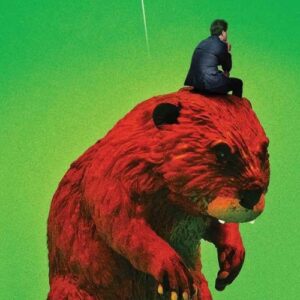True crime turns us all into gawkers, slow rolling past a broken body on a sidewalk or peering at bloodstains on a bedroom carpet.
I say that as someone who feels ambivalent about true crime books, articles, podcasts and TV shows and as someone who’s co-authored four true crime books and was a panelist at a true crime session at the Bouchercon 2024 mystery writers convention in Nashville in August. I’ve written about the tawdriness of true crime as entertainment … in one of those true crime books.
At the Bouchercon panel and at least one other true crime panel that week in Nashville, the genre found a ready audience. Our panelists came from a variety of writing backgrounds and spoke eloquently about the subject to an appreciative crowd.
Our moderator, Claire Booth, and the other panelists besides me, Emma C. Wells, Greg Lilly, Craig Robertson and Thomas Kies, all have great experience in fiction and non-fiction crime writing. They shared their most memorable true crime stories and sometimes those were stories that led them to write, either non-fiction or fiction.
I didn’t record our panel and can’t begin to recreate everyone’s comments, but after Bouchercon I asked the panelists for their thoughts on the subject of true crime. Some elaborated and some let their initial description of their interests speak for them.
True crime as inspiration
Lilly’s May 2024 book, “Abingdon’s Boardinghouse Murder,” focuses on a notable crime from that Virginia town: the 1945 killing, by a young widow who ran a boardinghouse, of a boarder, a World War II veteran.
“Helen Clark tossed the gun under the neighbor’s porch and then took a taxi to join her teen daughters at a movie in Bristol. When the body was found, after several conflicting statements, she settled on the claim that he shot himself four times, twice in the back. The Commonwealth of Virginia called it murder in a jealous rage. The trial enthralled the nation,” Lilly said.
Lilly noted that when he moved back to Southwest Virginia after living around the country for a few years, a realtor offered to show him Abingdon’s infamous “murder house.” Lilly replied, “Hell, no.” But the case never left the back of his mind.
Kies based his novel “Whisper Room” on the murders of 10 people, for the most part sex workers, between the early 1990s and 2011 in the Gilgo and Oak Beach areas of Long Island, New York. Another Kies novel, “Shadow Hill,” was based on the still-unsolved murders of a billionaire couple in Toronto.
Wells, whose new book “This Girl’s a Killer,” is about a female serial killer, was influenced by tales of men who killed in Louisiana – and Wells’ own proximity to those killing grounds.
“It is a really strange feeling, to continue living your everyday life, knowing that there is a serial killer hunting in your city and there is nothing you can do about it,” Wells said.
Robertson, who’s written 11 novels – most of them set in the mean streets of modern-day Glasgow, Scotland – has been active in the Bloody Scotland International Crime Writing Festival. He was a journalist and has a fascinating connection to 1980 Glasgow murders a man committed in killing his ex-wife, her four-year-old son and her brother: the killer’s sister gave him her brother’s belongings, making him the inheritor of a multiple murderer’s effects.
Booth, like some other members of the panel a former journalist, based her book “The False Prophet: Conspiracy, Extortion and Murder in the Name of God,” on a man who claimed to be the chosen one to herald the return of Christ and, probably inevitably, resorted to extortion, kidnapping and killing.
I talked about the 1985 murders of two teenagers in my hometown of Muncie, Indiana, a crime that led me to write not only numerous newspaper articles over the decades but also “The Westside Park Murders,” my co-authored 2021 true crime book from the History Press. I’ve previously written for CrimeReads about that tragedy, so no further elaboration is necessary here.
The future of true crime
The panel of writers fielded questions and talked about not only their most fascinating cases but also the importance of centering survivors of victims. It’s something that gets lost in much of true-crime-as-entertainment.
Booth agreed with me when she expressed concerns about some of true crime today.
“I’m very concerned that true crime is often seen as just an entertainment to be blithely consumed and forgotten,” she said. “People sitting around on a podcast chit-chatting and gasping in horror might be entertaining, but I think that really trivializes the causes and effects of the crime and is hurtful to the people who had to actually suffer through it. It’s important to remember that real people were involved—on all sides. That doesn’t mean it’s wrong to follow one side, like the victim’s. But it really is crucial to remember (and if you’re involved in true crime programming, to show) that the ripple effects of a crime, especially a violent one, go far and wide. Showing the effects on a community was important to me as I wrote my book.”
When I asked Lilly his picks for great true crime, he cited some classics: “The spark that ignited true crime was ‘In Cold Blood’ and Capote’s dramatization of the people involved. I love Deborah Blum’s ‘Poisoner’s Handbook’ that shows the birth of forensic medicine. John Berendt’s ‘Midnight in the Garden of Good and Evil’ illustrated how culture, characters, and setting will blend to create an immersive experience.”
Booth cited a true crime book I hadn’t heard of but now really want to read: “Ghettoside: A True Story of Murder in America,” by Jill Leovy. “It is a riveting look at gang killings in South Los Angeles, why they happen, their effect on a traumatized community, and the detectives trying to solve the killings. Leovy, an LA Times reporter, is a masterful storyteller and her book is not only exceptional reporting, it’s also a great read.”
Considering that part of our session was about victims and victimizers, it was appropriate that Wells cited the recent online debate about whether women would rather encounter a bear or a man while on a walk in the woods.
“It is no wonder why women choose the bear,” Wells said. “All of the women who were killed by these monsters should still be here, leading their lives on their terms. That was taken from them, and I think about it often. A bit of that old fear has stuck with me all these years, and I find that I am probably overly cautious compared to many people. All of this contributed to my debut thriller, and the creation of my main character—a strong, capable, girl’s-girl serial killer who takes out the trash. Cordelia is the killer we needed. I never mention these real-life cases—but they influenced me as a person, and therefore my writing.”
Asked about the future of true crime, Lilly replied, “With the flood of podcasts and shows, an ebb of the wave will leave the well-written, character-driven stories—the tales that do not dwell on gore or sensationalism. By its nature, true crime has enough shock and lurid details without being overhyped by stylized production companies or entertainment personalities.
“The elements of telling a story are constant. Quality books, podcasts, tv shows, articles and blogs use the same form: (Character) wants (goal) because (motivation) but faces (conflict). This is an archetypal narrative that speaks to the reader or listener. The character-based stories of true crime will continue because it is relatable, even as a cautionary tale.”
Booth was thoughtful about the future of true crime.
“Unfortunately, crime isn’t going to go away, so I don’t see the true crime market shrinking any time soon,” she said. “It might stop expanding as some shows and podcasts fall away. But people are fascinated and I think that the right kind of true crime show—respectful, thoughtful, looking at both causes and effects, not sensationalized—can shed light on the darkness.”

















